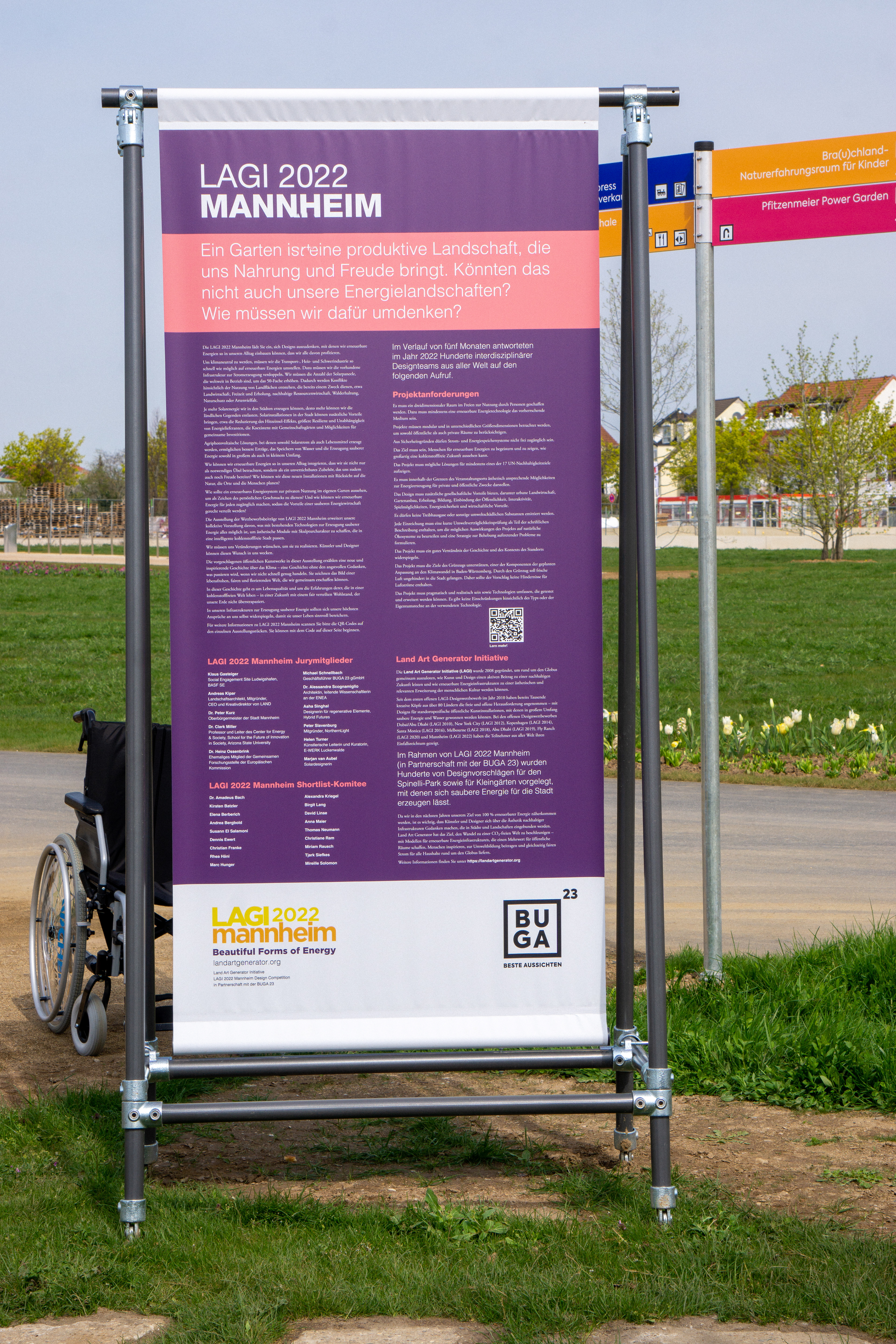Ma duneland was created by Jonas Eisenhofer, Daniel Klose, Jaira Pagkalinawan, Michelle Marker, Marlene Bögl, Jessica Messer, Esra Uyar and me. We designed the Spinelli-area for how it could be used after the BuGa23. The concept was to create an inspiring place of education, connection and hopefulness towards the future. Ma duneland incorporates algae bioreactors, thin-film solar photovoltaic, kinetic energy pavers to generate 280 MWh each year. The artwork provides additional social co-benefits including a research facility and educational workshops. Our project is one of the many entries to the 2022 Land Art Generator Initiative design competition for Mannheim in partnership with BuGa 23 and ended up being shortlisted. Ma duneland is part of the LAGI book, as well as the exhibition at BuGa 23.



Mannheim, once praised for its sunny and warm climate, is facing new problems: overheating, rising temperatures, as well as low rainfall and winds. The city center often experiences higher temperatures, with a temperature difference of up to 4 degrees Celsius compared to the surrounding areas. Cooling the city is challenging due to the dense urban development in the city center, which leads to blockage and heat accumulation. Additionally, particulate matter and poor air quality are trapped, lowering the overall air quality. The heat and environmental issues are affecting the quality of life in Mannheim and prompting people to seek a place to retreat and recover from the stifling city.
Ma duneland is our solution. With Ma duneland, we create a space for the citizens of Mannheim and future generations to come together and connect. Ma duneland should not only be multicultural but also multifunctional. In line with Mannheim's history of innovation, we aim to design the green space in a way that combines work, leisure, and education—a place that inspires people to think and dream. We have also kept Mannheim's personal goal for the BUGA in mind: not a monument, not a landmark, but a place that gives something back to nature.
As part of the Green Corridor, Ma duneland provides a refreshing airflow into the city and offers the residents of Mannheim a new, inspiring place to stay. Ma duneland's goal is not to compete with nature but to adapt to the natural landscape. We aim to preserve the natural forms of nature and avoid the presence of harsh lines and edges. It is a place for relaxation and gathering but also a place to be inspired by solutions in future energy technology. Furthermore, we want to educate people about the inland dune landscape around Mannheim and the local flora and fauna of the region.
The largest dune duo in Ma duneland forms the Workspace complex. It consists of an indoor and outdoor area with seating options where people can come together for collaborative work. Our goal is to create a place for people from all over Mannheim, especially those from the surrounding neighborhoods.
Here in the Education Dune, the Renewable Energy Lab is not only a showcase of the technologies we use, but also an interactive learning experience for all. On the roof, there is a specially designed biodiversity area. Flowers, plants, and insect hotels are placed there to provide a protected retreat for native species. This allows visitors to not only observe local biodiversity but also raise awareness about it. The offerings of the Renewable Energy Lab are intended for people of all ages and generations.
In the Oasis Dune, people can find tranquility, enjoy nature alone, or have a picnic with friends. Located not far from the cable car, it is easily accessible from the city of Mannheim. This is the place to immerse oneself in the nature of Ma duneland.
In addition to education, relaxation, and productivity, this is the place to get active and even generate your own energy. The Ma duneland Skatepark consists of a pump track that blends harmoniously into the landscape. As visitors skate on the skatepark, kinetic energy is collected and converted, allowing them to become active participants in energy generation.
